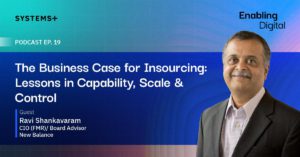Posted : October 29th, 2020
The first step toward a sound and secure RPA infrastructure begins with an understanding of the core
Architectural components of the solution, their operations, and the requirements for secure RPA platform.
Securing RPA Platform
Security measures to be considered while designing secure RPA platform. Below mentioned are few steps Automation Anywhere takes for ensuring all of the data is protected.
Multi-layer identification and authentication
A security level let you determine how strong the identity of user is or if he is really the user he claims to be. It is very clear that a user logged from company network is more trustworthy then someone logged in from the internet.
- It is necessary for fixing security in order that humans and bots must be authenticated before accessing or performing actions within the RPA platform
- Automation anywhere offers flexibility to have single or multi-factor authentications and application credentials in the Control Room, which manages and monitors all processes of the infrastructure. This involves integration with Microsoft Active Directory using LDAP, Active Directory using Kerberos and native authentication using the embedded Credential Vault for identity and access management
- You can also use an external third-party-privileged access system (Burp suite, Nessus Scanner, Open Web Application Security (OWASP), Black Duck) or support for SAML 2.0 based single sign-on (SSO)
Multi-Level Authentication allows you to define, assign levels to your users and protect your services based on below strategies:
- Contextual-based
- Credential-based
- Authenticator-based Encryption
Encryption
Encryption can ensure a basic level of security for all sensitive data so that it remains hidden from unauthorized users. Encryption is vital because it allows you to securely protect data that you simply don’t want others to possess access.
- Many RPA tools allow for the configuration and customization of encryption methods, from securing specific types of data to safeguarding against the interposing of network communication
- Encryption is majorly effective when implemented with a comprehensive information security plan
- RPA provides file and text encryption
Access control
Though RPA replaces humans with bots, people still need to work with bots to schedule, run, and view and edit their processes. To successfully and securely do that, security admins must be ready to specify who does what — access control for humans and bots alike is critical. Access control for humans and bots is critical.
Audit logs
RPA platforms, provides comprehensive audit logging, monitoring, and reporting capabilities.
- Extensive audit logging is performed for 185+ activities on Automation Anywhere platform. Comprehensive and continuous audit logging capabilities within the Enterprise room enable you to spot and alert abnormal activities like bot performance errors, misuse by employees, malicious code so on
- It ensures enterprise-level security and audit compliance
- Full audit trails enable you to make quicker and cleaner audit reports, and make sure that you’ll retrace the steps that led to a selected problem, be it a mistake within the robot’s performance, malicious code or other misuse by an employee
Bot-specific security
It is important that the bot code be secured from piracy. Because bots mimic users, they interact with applications using keyboard and mouse peripheral inputs.
How can I secure my RPA environment?
For leveraging the cyber security your organization approach should provide the following:
- Integrity
- Traceability
- Confidentiality
- Control
How can RPA improve your security organization?
- Decrease time to detect and respond to incidents, helping minimize risk exposure to an attack
- Minimize employee turnover due to lack of challenge or career progression by permitting employees to focus on higher value tasks
- Make intelligent decisions quickly, leading to high-quality and consistent outcomes






